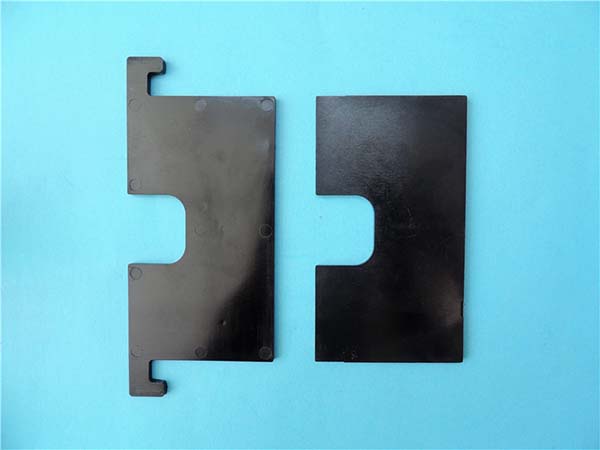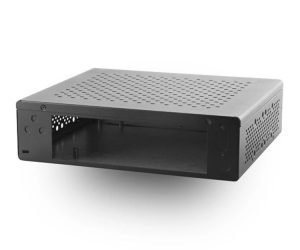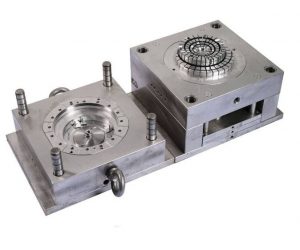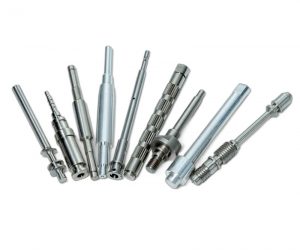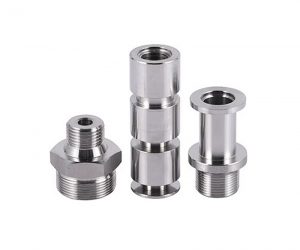1. Understanding Prototype Inc: An Introduction
In the dynamic realm of product development, Prototype Inc stands as a cornerstone, playing a pivotal role in shaping innovative ideas into tangible realities. But what exactly is Prototype Inc, and why is it so crucial?
1.1 What is Prototype Inc?
Yigu Technology Prototype Inc, in a nutshell, is a concept or entity that specializes in the creation of prototypes - the initial, experimental versions of a product. These prototypes serve as a blueprint, a testing ground, and a communication tool all rolled into one. They are the first physical or digital manifestations of a product idea, allowing developers, designers, and stakeholders to visualize, test, and refine the concept before full - scale production.
For example, let's consider a tech startup that aims to develop a new smartwatch. Prototype Inc would be the team or company responsible for creating the first working models of this smartwatch. These prototypes might not have all the bells and whistles of the final product, but they would include the core features such as the ability to track fitness metrics, display notifications, and connect to a smartphone.
1.2 The Importance of Prototype Inc in Product Development
- Risk Mitigation: Developing a product from scratch is a risky endeavor, especially when it comes to new and untested concepts. Prototype Inc helps mitigate these risks by allowing companies to identify and address potential issues early in the development cycle. According to a study by McKinsey & Company, companies that invest in prototyping can reduce development costs by up to 50% and time - to - market by 30 - 40%. For instance, if a prototype of a new software application reveals usability issues, these can be fixed before investing significant resources in further development.
- Concept Validation: A prototype provides a tangible way to validate whether a product concept is viable. It allows companies to gather feedback from potential users, investors, and partners. In a survey of 500 product managers, 85% stated that prototyping was essential in validating their product ideas. For example, a food startup might create a prototype of a new healthy snack and conduct taste tests with consumers to gauge interest and gather feedback on flavor, texture, and packaging.
- Enhanced Communication: A prototype serves as a common language for all parties involved in a product's development. Engineers, designers, marketers, and executives can all look at the prototype and understand the product's features, functionality, and overall vision. This reduces misunderstandings and ensures that everyone is working towards the same goal. For example, in the development of a new car model, the prototype allows the engineering team to discuss technical specifications with the design team, while the marketing team can start planning their promotional strategies based on the prototype's features.
- Iterative Improvement: Prototype Inc enables iterative development, where each prototype builds on the previous one, incorporating feedback and improvements. This iterative process leads to a better - quality final product. A case study of a leading consumer electronics company showed that through iterative prototyping, they were able to improve the battery life of their new product by 20% and enhance the user interface based on user feedback.
In conclusion, Yigu Technology Prototype Inc is not just a step in the product development process; it is a fundamental element that can make or break the success of a new product. By understanding its role and importance, companies can leverage prototyping to create innovative, user - friendly, and market - ready products.
2. The Benefits of Employing Prototype Inc
2.1 Cost - Efficiency
One of the most significant advantages of Prototype Inc is its cost - efficiency. In traditional product development, companies often invest a large amount of money in tooling, manufacturing, and production before any testing has been done. If a design flaw or functionality issue is discovered late in the process, it can be extremely costly to rectify.
For Yigu Technology example, a study by the Product Development and Management Association (PDMA) found that on average, every dollar spent on prototyping in the early stages of development can save up to $100 in downstream costs. Consider a consumer electronics company developing a new tablet. If they skip the prototyping stage and start full - scale production, and later find that the battery life is much shorter than expected, they would have to recall the products, redesign the battery system, and re - manufacture the tablets. This would involve costs such as product recall expenses, redesign fees, and lost production time.
In contrast, by using Prototype Inc, the company can build a prototype early on and test the battery life. If there are issues, they can make adjustments to the design, such as using a more efficient battery or optimizing the power management system, at a fraction of the cost compared to making these changes after mass production. The following Yigu Technology table further illustrates the cost savings:
| Stage of Development | Cost of Making a Design Change |
| Concept and Prototype Phase | \(1 - \)10 |
| Design Freeze and Tooling Phase | \(100 - \)1000 |
| Production Phase | \(1000 - \)10000+ |
As shown in the table, making changes during the prototype phase is significantly more cost - effective than making them during later stages of development.
2.2 Time Savings
Time is of the essence in today's competitive market, and Prototype Inc can be a game - changer when it comes to shortening the product development cycle. Traditional development methods often involve long, sequential processes where one stage must be completed before the next can begin. This can lead to significant delays.
For instance, in a software development project, without prototyping, the development team might spend months writing code based on a set of requirements. Only after the code is completed do they realize that some of the features are not user - friendly or do not meet the market's needs. This would require going back to the drawing board, rewriting code, and repeating the testing process, all of which takes a great deal of time.
With Prototype Inc, a working prototype can be developed quickly. This allows the team to get early feedback from users, investors, and stakeholders. Based on this feedback, they can make iterative improvements in a much shorter time frame. A case study of a mobile app development company found that by using prototyping, they were able to reduce their development time from 12 months to 8 months. This early launch gave them a competitive edge in the market, allowing them to capture a larger market share before their competitors.
Moreover, prototyping can also help in parallelizing some of the development tasks. For example, while the engineering team is working on the technical aspects of the prototype, the marketing team can start developing their marketing strategies based on the prototype's features. This overlapping of tasks further accelerates the overall development process.
2.3 Risk Mitigation
The development of a new product is fraught with risks, and Prototype Inc serves as a powerful tool for risk mitigation. By creating and testing prototypes, companies can identify potential problems and address them before the product is launched into the market.
A well - known example is the automotive industry. Car manufacturers create multiple prototypes of new car models. These prototypes are rigorously tested for various aspects such as safety, performance, and fuel efficiency. Through these tests, they can identify issues like potential brake failures, engine malfunctions, or aerodynamic inefficiencies. If these issues were to occur after the cars were already on the market, it would not only lead to costly recalls but also damage the company's reputation.
In terms of data, a research by Gartner showed that products with thorough prototyping and testing have a 70% lower failure rate in the market compared to those without proper prototyping. Prototyping allows for comprehensive testing in different scenarios and environments. For example, a new medical device prototype can be tested in simulated clinical settings to ensure its functionality, safety, and compatibility with other medical equipment. This reduces the risk of the device malfunctioning during actual use, which could have serious consequences for patients and the medical facility. Overall, Prototype Inc is an essential component in minimizing risks and ensuring the long - term success and reliability of a product.
3. Tips for Making the Most of Prototype Inc
3.1 Preparation Before Engaging Prototype Inc
Before you start working with Prototype Inc, thorough preparation is key to a successful collaboration.
1. Define Your Requirements Clearly
The first and foremost step is to have a crystal - clear understanding of your product requirements. This includes not only the basic features and functions but also the target market, user needs, and any specific constraints such as budget, time - to - market, or technical limitations. For Yigu Technology example, if you are developing a new fitness tracker, you need to determine features like heart rate monitoring, sleep tracking, step counting, and the type of display you want. You should also consider factors like the target users' age group (e.g., fitness enthusiasts in their 20s - 40s), the price range they are likely to afford, and the expected battery life. A study by Harvard Business Review found that projects with well - defined requirements are 50% more likely to be completed on time and within budget. Make a detailed list of all these aspects and document them in a requirements specification document.
2. Gather Relevant Information and Data
Collect any data or information that might be relevant to the prototype development. This could include market research data, user feedback from similar products, competitor analysis reports, and any existing technical specifications or design concepts. For instance, if you are in the food industry and want to develop a new line of healthy snacks, gather data on current market trends in healthy eating, consumer preferences for flavors and ingredients, and the packaging and pricing strategies of your competitors. This information will help Prototype Inc to create a more informed and market - ready prototype. A survey of product managers showed that 75% of them believed that having comprehensive data at the start of a prototype project significantly improved the quality of the final product.
3. Set Realistic Goals and Expectations
It's important to set clear and achievable goals for the prototype. This includes defining what the prototype should be able to do, what its limitations can be, and the expected timeline for its completion. For example, if you are developing a software prototype, your goal might be to have a working version that demonstrates the core functionality within two months. Be realistic about what can be accomplished in the given time and budget. Unrealistic expectations can lead to disappointment and frustration for both you and Prototype Inc. According to a project management study, 40% of projects that failed to meet their goals did so because of unrealistic expectations set at the beginning.
3.2 Effective Communication During the Process
Once you start working with Prototype Inc, maintaining effective communication is crucial for the success of the project.
Set up regular meetings, whether they are in - person, via video conferencing, or phone calls. Weekly or bi - weekly meetings are often a good frequency to discuss progress, address any issues, and provide feedback. In addition to meetings, establish other communication channels such as email for non - urgent communication and a project management tool like Asana or Trello to track tasks and progress. A study by McKinsey found that teams with regular communication channels were 30% more productive than those without. For example, if there are any changes in the project requirements, you can quickly communicate them via email and then discuss the implications in the next meeting.
4. Conclusion
In the complex and competitive landscape of product development, Yigu Technology Prototype Inc emerges as an invaluable partner. We've explored how it serves as a fundamental pillar in the journey from a raw product idea to a market - ready offering.
The cost - efficiency of Prototype Inc cannot be overstated. By identifying and rectifying issues in the early prototype stages, companies can avoid the exorbitant costs associated with making changes during later development phases. The time savings it offers, allowing for quicker product launches and a head - start in the market, are equally significant. And perhaps most importantly, its role in risk mitigation, ensuring that products are reliable and safe for consumers, is crucial for the long - term success and reputation of any company.
If you're on the verge of embarking on a product development project, don't hesitate. Take the first step and reach out to Prototype Inc. Their expertise, combined with your innovative ideas, can create a winning formula. Whether you're a startup with a groundbreaking concept or an established company looking to innovate and stay ahead of the competition, Prototype Inc has the tools, experience, and knowledge to turn your vision into reality.
So, what are you waiting for? Contact Yigu Technology Prototype Inc today and start your journey towards successful product development. The future of your product starts now.
